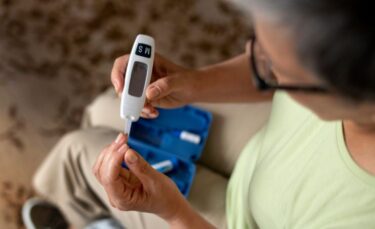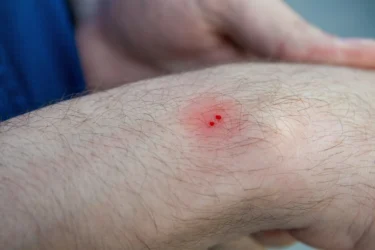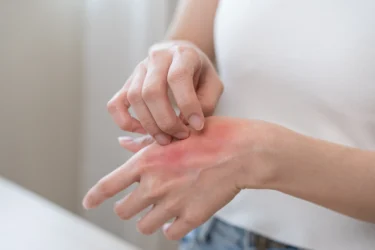Kaunch Beej: Uses, Benefits, Side Effects, Precautions and More!
By Dr Smita Barode +2 more

Get,

to manage your symptom
Get your,


4 Cr+ families
benefitted

OTP sent to 9988776655



You’ve successfully subscribed to receive
doctor-approved tips on
Whatsapp

Get ready to feel your best.

Hi There,
Download the PharmEasy App now!!


Register to Avail the Offer
Send OTPBy continuing, you agree with our Privacy Policy and Terms and Conditions

Hi There,
Sign up on PharmEasy now!!
Trusted by 4 crore+ families

OTP sent to 9988776655



You have unlocked 25% off on medicines




Code: NU25
By Dr Smita Barode +2 more
Table of Contents
Kaunch Beej is also referred as Cowhage or Cowitch. The scientific name of the plant is Mucuna pruriens and it belongs to the family Fabaceae of legumes. The seeds are generally called Magic Velvet Beans for their application on hair. They are also a good source of protein and can act as an immunity booster. They are known for their medicinal properties such as antibacterial, antidiabetic, antioxidant, dewormer, and it is also used in Parkinson’s disease and in older adults to boost overall health1.

Did you know?
Kaunch beej consists of a wide range of phytochemical constituents like glycosides, reducing sugars, saponins, alkaloids and tannins, which may be responsible for its potential uses2. Other nutritional components of kaunch beej are:
Nutrients present in kaunch beej per 100g2.
Owing to the multitude of nutrients present, kaunch beej may have several beneficial properties. These include anti-parasitic, anti-microbial, antioxidant, anti-inflammatory, anti-venom and antidiabetic activity1,2.
Some of the traditional uses of kaunch beej that are backed by scientific research include

Levodopa has been a widely used drug to treat Parkinson’s disease since 1960s3. However, due to its high cost, people were unable to use it and were in search of other drugs or herbs to replace the levodopa. Many studies2 have been conducted on kaunch Beej, and its L-dopa component may have shown potential to help with Parkinson’s disease. According to one of the pilot trial, the 30 g formulation of Mucuna pruriens may be more beneficial for Parkinson’s disease than conventional L-dopa formulations. Without increasing dyskinesia or other dopaminergic side effects, it demonstrated an immediate and significantly longer duration of symptom alleviation. This may indicate the potential kaunch seeds hold in managing Parkinson’s disease4. However it is a severe condition and needs proper medical intervention. Please consult your doctor for suitable advice.

In studies, Kaunch Beej extract is found to have a strong ability to reduce blood glucose levels along with reduction in the cholesterol levels. One of the studies5 on rats shows that kaunch beej increases the production of insulin levels in blood and reduces the blood sugar level. This may indicate some beneficial effects of kaunch beej in diabetics, but you must always consult a doctor before using.

Some studies have shown that kaunch beej is effective in killing parasitic worms. One study6 showed that worms were paralysed when kaunch beej oil sample was used. This may indicate that kaunch beej may help in controlling parasitic worms. However, scientific evidence to support this statement is currently inadequate.

It is found that oral administration of kaunch seeds can protect against toxin effects of snake bites. This is because of protein present in the seeds that helps to block the protein digesting enzyme in snake venom7. In some countries like Nigeria, these seeds are used as a safety measure against snakebites8. However, snakebite is a very dangerous, it’s better to consult doctor immediately to avoid unnecessary situations.

Studies have confirmed the antibacterial and antifungal effects of kaunch beej’s seed and root’s extract. They play a vital role by inhibiting the specific microbes thereby helping fight several infections2. According to a study both methanolic and aqueous extracts of Mucuna pruriens seeds have antibacterial action against a range of bacterial strains, including those that are resistant to drugs, as well as some types of fungi9. But you always be in touch with your healthcare professional, before self-medicating.

Though there are studies showing the benefits of kaunch beej in various conditions, these are insufficient. There is a need for further studies to establish the true extent of the benefits of kaunch beej on human health. Furthermore, every person may respond differently to these herbs. Therefore, it is important to consult a doctor before using kaunch beej for any medical condition.
Kaunch beej is a geriatric tonic, as mentioned in Ayurvedic literature. Along with Parkinsonism, Kaunch beej might also be useful to manage constipation, oedema, tuberculosis, fever and menstrual disorders.
Dr. Rajeev Singh, BAMS
Kaunch beej can be used as:
One should always take the advice of an Ayurvedic physician before having kaunch beej. They will guide you with the best form and dosage in which the herb can be used per your health condition. In addition, we recommend you do not replace or discontinue your ongoing medications with any ayurvedic or herbal preparations without seeking the medical advice of a qualified doctor.
The most common side effects of kaunch beej are due to presence of L-Dopa components, they include11:
Some of the other possible side effects may be:
However, if you experience such side effects, immediately seek medical attention from your physician who has prescribed it to you. They will prescribe you a better treatment possible to overcome the side effects.
Also Read: Khadirarishta: Uses, Benefits, Side Effects & More!
The following drugs may interact with the active components of Kaunch Beej:
Therefore, always discuss your ongoing medications with your doctor and they will further give you a suitable prescription for you as per your conditions
Also Read: Ashokarishta – Uses, Benefits, Side Effects & Precautions
Kaunch beej is well known for its high protein content and is used traditionally for various medicinal purposes. They are mainly used as a treatment for Parkinson’s disease, as many patients are unable to afford to buy levodopa. Still, there are many ongoing about the potential health benefits of kaunch beej. It is always better to consult a healthcare professional before self-medicating any herbs to avoid unnecessary side effects.
Also Read: Suhaga: Uses, Benefits, Precautions & More!
Kaunch Beej is called Cowhage or Cowitch in English. It is a legume that grows in tropical and sub-tropical parts of the world. It is widely called Magic Velvet Beans. It is either used as a major source of dietary protein in some parts of the world or as a herbal product
Kaunch Beej may support weight management. The seeds may improve body composition by making appropriate changes in liver and adipose tissue caused by obesity. However consult a qualified nutritionist if you are looking to achieve your weight loss goals.
Kaunch seeds are an excellent source of protein. They also may have several beneficial properties that make them an ideal ingredient in various ayurvedic medications. Kaunch Beej concoction can also help reduce blood glucose levels, fight infections and deworm. In addition, Kaunch Beej may help with Parkinson’s disease. Further studies are needed to establish the given effects of kaunch beej and it is best to consult a doctor for advice on these conditions before consuming kaunch beej.
Disclaimer: The information provided here is for educational/awareness purposes only and is not intended to be a substitute for medical treatment by a healthcare professional and should not be relied upon to diagnose or treat any medical condition. The reader should consult a registered medical practitioner to determine the appropriateness of the information and before consuming any medication. PharmEasy does not provide any guarantee or warranty (express or implied) regarding the accuracy, adequacy, completeness, legality, reliability or usefulness of the information; and disclaims any liability arising thereof.
Links and product recommendations in the information provided here are advertisements of third-party products available on the website. PharmEasy does not make any representation on the accuracy or suitability of such products/services. Advertisements do not influence the editorial decisions or content. The information in this blog is subject to change without notice. The authors and administrators reserve the right to modify, add, or remove content without notification. It is your responsibility to review this disclaimer regularly for any changes.
Comments

Leave your comment...
You may also like
Comments